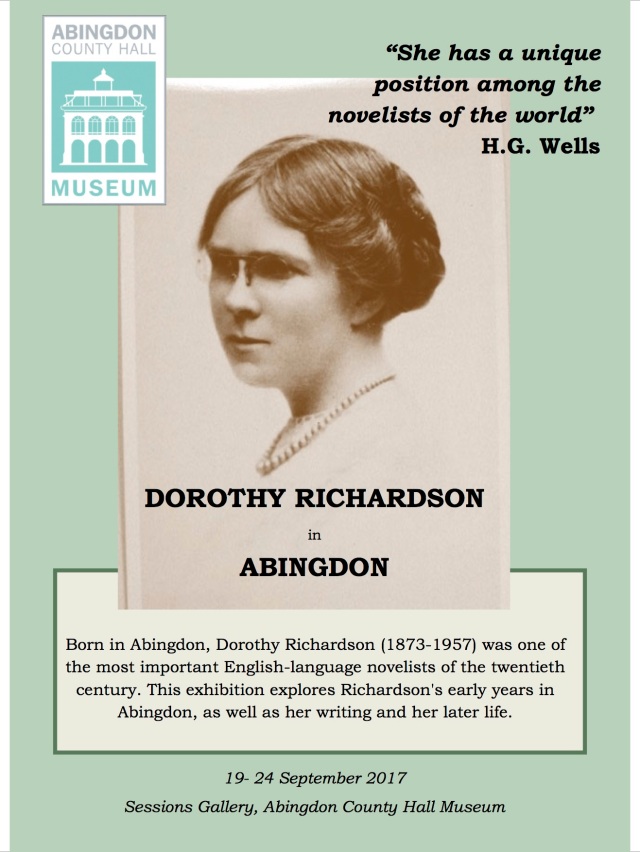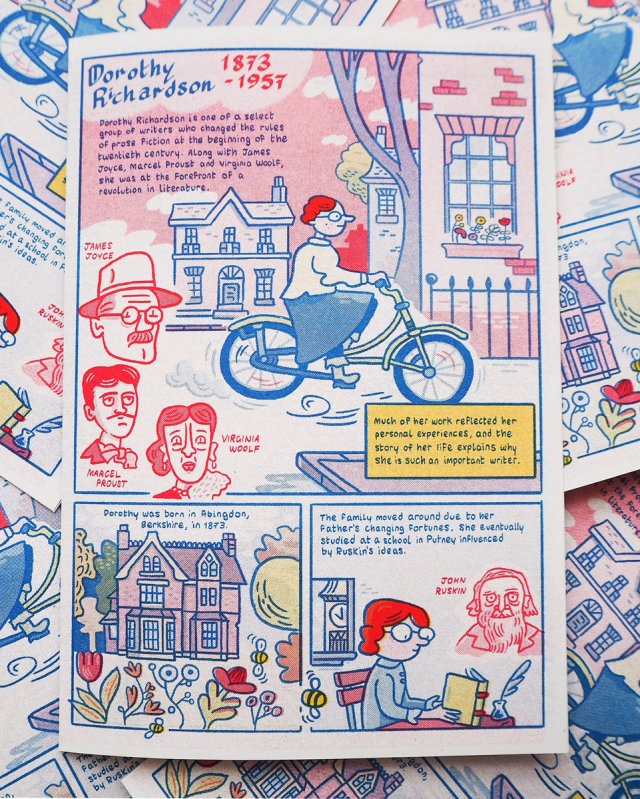Abingdon – formerly in Berkshire, now in Oxfordshire – might not be the first place to be associated with Dorothy Richardson. But alongside various spots in London and Cornwall, as well as Hanover, Surrey, and Vaud, any good Richardson guided tour would have to stop off in the town of her birth, renamed ‘Babington’ in Pilgrimage. Writing a biographical note for a Spanish publisher later in her life, Richardson described Abingdon as a place ‘near one of the loveliest reaches of the Thames and not far from the ancient university town of Oxford’. In Pointed Roofs, Miriam remembers a ‘pretty old gabled “town” on the river’.
Today, there is little trace of Richardson in the town in which she spent the first eight years of her life. In a situation that will be sadly familiar to anyone with interests in women’s writing, Richardson is mentioned on the Abingdon town website in a single sentence of a long entry on her grandfather, Thomas Richardson, a prominent grocer and member of the burgeoning Methodist community in the area; she is simply described as having ‘achieved fame as a feminist writer and a sometime lover of H. G. Wells’. There is a blue plaque on the house where she was born – a few metres along the wall from the monogram that her father, Charles, had engraved there. This plaque, however, is for someone else, not even a member of her family – it memorializes instead an antiquary and former mayor of the town.
With all of this in mind, at the Dorothy Richardson Editions project, we’re interested in raising Richardson’s profile in the town of her birth. As a starting point, for a week from 19 September 2017, we are staging a small exhibition at Abingdon County Hall Museum. ‘Dorothy Richardson in Abingdon’ introduces Richardson’s life and work, using images and information panels, as well as a range of rare books from the archive of the Dorothy Richardson Society.

For me, one of the most fascinating challenges in putting together the exhibition has concerned Richardson’s status as a modernist. In particular, Richardson was a writer who exemplified modernism as a networked, mobile, cosmopolitan phenomenon, with a complex relation to origin and place – her Abingdon is not Wordsworth’s Lake District or the Brontës’ Haworth. At the same time, for the museums and heritage sector of today, there are riches to be found in the stories of modernist writers like Richardson – stories that are important correctives in a world that too often seems to have turned against encounters with difference and mobility across borders.
Alongside the exhibition, ‘Dorothy Richardson in Abingdon’ has involved two other projects. The first has been to bring together historical expertise and archival records in the local area in order to gain a better understanding of Richardson’s family and her very early years in Abingdon. To this end, as well as talking to local historians and archivists, I have followed the Richardsonian paper trail in the Oxfordshire County archives and the archives of the long-established local charity, Christ’s Hospital – the latter, who still own almshouses in Abingdon, leased the land on which Charles Richardson built the grand house in which Dorothy was born. My task now is to write an article on what I found. For me, one of the most exciting elements to have emerged from this research was the discovery of the fact that the Richardson family owned land by the River Ock adjoining a space owned by Christ’s Hospital and known as the ‘bee garden’; anyone who has read Pilgrimage will know well Miriam’s ‘bee memory’ of the town of her birth.
Like the exhibition, the other project introduces Richardson’s life and work, but in a different way – one that is easier to take home. Simon Reid, an illustrator and comic-book author based in Abingdon has produced a joyous four-page comic about Richardson, printed in three-colour risograph on recycled paper by The Holodeck, an artist-run printmaking and bookbinding space in Birmingham.

The comic is available for visitors to the exhibition, but there are a limited number of spare copies. If you’d like one, please get in touch and I’ll send you one.
Adam Guy

Pingback: Dorothy Richardson – Simon Reid